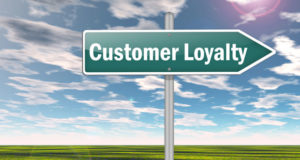I start a lot of client engagements with a simple question: Who’s the customer? It’s amazing the answers that I get. Some people are really quite good. They know the customer’s demographic and business or personal needs, and they focus on those things. Others don’t even grasp the difference between a customer and a consumer.
You might expect this if you are working in the business-to-consumer rather than business-to-business space. Working with businesses gives an automatic understanding that there are multiple influences, from the people who write the checks to those who use the products. However, when the customer and consumer are often the same person, it gets blurry.
Understand Your Customer
To back up, my simple understanding of the situation, which I try to adhere to rigorously, is that the customer pays the bill, and the consumer uses or consumes the product or service. With that understanding, it’s easy to see why how the B2C confusion arises.
I discovered in writing my last book, You Can’t Buy Customer Loyalty, But You Can Earn It, that even the idea of the customer has subtle divisions that become important as markets mature, especially if you’re thinking about a customer’s loyalty or lack of it.
Consider the marginal customer, which is really the nub of the whole loyalty discussion. As you might sense, a marginal customer is one on the cusp — someone who might see some value in your product or service but not at your favorite price point, aka “list price.”
In tight markets, capturing marginal customers is one of the few avenues for new business and, thus, growth. Another approach is population growth, but often we don’t count this organic growth because it’s almost automatic. Marginal customer capture becomes a fine art for most businesses, and because it represents a zero-sum game that everyone plays, businesses also must foster retention through loyalty programs of various sorts.
That is where the story gets interesting. Attracting a marginal customer has been a tactic for as long as there has been marketing. Temporarily lowering your price through coupons and incentives is ultimately a way of attempting to get closer to the marginal customer’s concept of value.
It’s a good idea, and it works with varying results. It’s reasonable to expect a two-for-one promotion at a sandwich shop to increase traffic, but whether the approach is good at creating loyal customers is another matter. On the other hand, I doubt you’d find a willing accomplice to take advantage of a two-for-one at a colonoscopy clinic.
Don’t Blend
In my study of customer loyalty, I was amazed by how often businesses use strategies for garnering marginal customers to promote customer loyalty. Loyalty programs that use pure rewards are everywhere. They include obvious things like frequent flyer programs and less apparent offers like coupons.
However, when you reduce your promotion to some form of financial incentive, two bad things happen, as many studies, I’ve seen point out.
First, you look like everybody else, and it’s hard to differentiate if you are rewarding a purchase with some form of discount. Instead of standing out, you blend in — and worse, you lose margin that you really need to pay for other things like support and product enhancement.
Second, and possibly worse, you lose the opportunity to be in a moment of truth with your customer. The repeat customer — one who is not marginal — might be on the cusp of being loyal and might not need the inducement, at least not at purchase. If the idea of promoting loyalty is to create better customers — that is, those who buy more, pay closer to the list price, advocate for your brand, and contribute feedback that makes you better, then rewarding a purchase misses all that.
Then there’s customer participation — making your business sticky by making customers want to engage on a deeper level — another research study topic. The loyalty question isn’t about whether to reward customers or how to attract marginal ones. The issue is about tactics. Rewarding behavior not directly associated with a purchase has merit. A customer who recommends or advocates for your brand, for instance, is valuable and should be rewarded.
Refining Customer Loyalty
There’s an analog to this in marketing. Until quite recently, before the advent of good marketing automation, most vendors relied on one kind of marketing program simply designed to surface leads that sales then would invest huge amounts of time into qualifying.
It used to be that if you were a customer just wanting a little more information and you made another inquiry, you got pretty much the same information on your second attempt but through a different program or channel. It wasn’t until the idea of lead nurturing came into focus that we developed better approaches. Nurture campaigns are now designed to support multiple touches, always with more detailed information or greater specificity.
Our approaches to customer loyalty need to be refined in a similar way. What we use for marginal customers doesn’t work well to build loyalty, and that’s part of the reason the global economy spent US$6.2 trillion on churn in 2014. That’s a huge amount of money spent, essentially, to maintain the status quo. Your business has a stake in those trillions. What are you doing about it?
























































